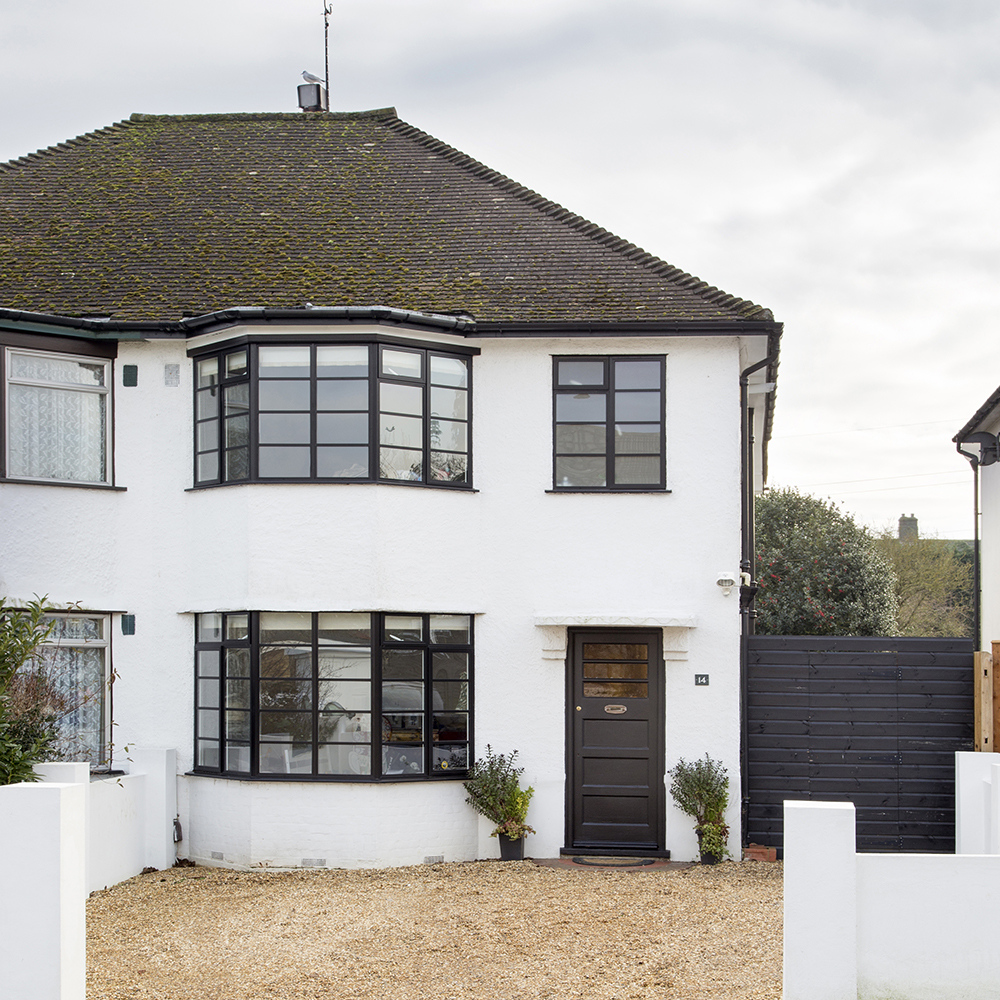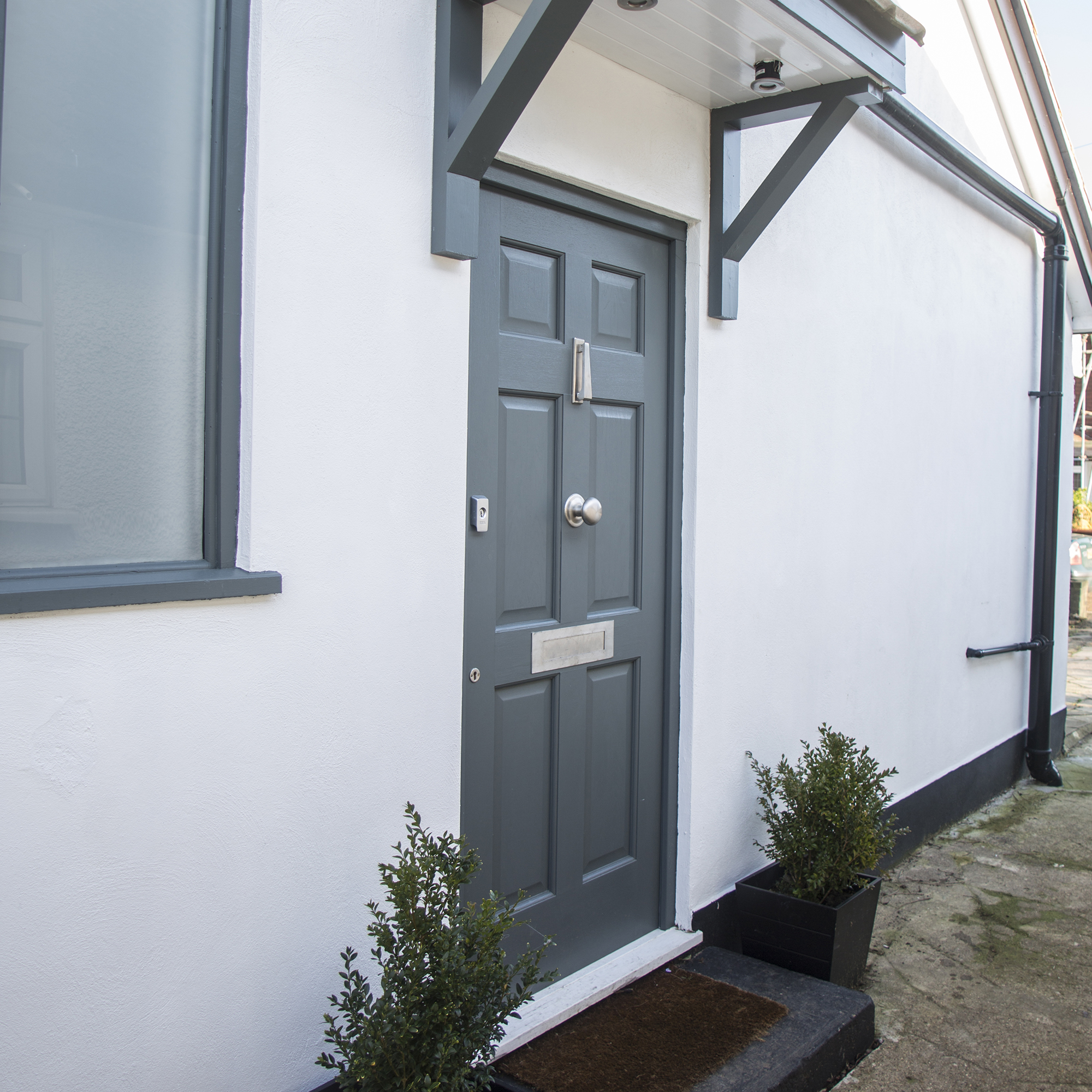The 5 benefits of rendering a house according to Charlie Luxton
Find out why render not only looks good, but offers practical advantages too

The use of external plaster or render goes back nearly 10,000 years. Its potential to effortlessly transform a tired old house into something sleek and sophisticated with a few waves of a plasterer’s arm is undoubtedly alluring. Combined with the use of external insulation this transformation can not only be aesthetic, but comfortable and sustainable too.
The same benefits also apply to new builds but be warned, rendering a house is hard to get right and even harder to keep looking good.
The benefits of rendering a house
Where many materials used for exterior cladding soften and look better with age, render rarely does. The moment it’s finished and perfect is when the render is at its best. However this can be avoided by careful design and specification.

1. It allows the building to breathe
To achieve your flawless vision you need to start with some physics and understand how your building breathes. The idea of a ‘breathing building’ may sound weird but all buildings absorb and release moisture; this is known as its breathability. This moisture is not from driving rain (although this contributes) but is mostly water vapour that cooking, showering and breathing produces.
This moisture generally moves from inside to outside through the walls of your home. Older buildings, especially without DPCs (Damp Proof Course) are very moisture permeable and rely on this to keep dry. Therefore the render you put on the outside of your house has to match the breathability of your existing walls or you will trap moisture within the structure and create a problem, resulting in looking at how to get rid of damp.

2. It's suitable for older buildings or modern properties
There are traditional and modern lime plasters that work really well with older buildings and more modern cavity walls also benefit from a vapour open (breathable) render to ensure you don’t get damp, and possibly mould, in your home.
If water does get trapped in your walls by a non-breathable render or exterior paint it can cause the top finish to blister and fail which looks like an outbreak of boils!
Sign up to our newsletter for style inspiration, real homes, project and garden advice and shopping know-how
3. Good detailing ensures no cracking or staining
Getting breathability right is all about specification and is the first step. Next is to ensure you don’t get cracking or staining, this is all about good detailing.
As the temperature swings between day and night, summer and winter, buildings grow and shrink so carefully located expansion joints are needed to allow for movement between sections of render rather than in the render itself. This will stop your beautiful surface cracking.
Perhaps worse than cracking is weathering stains around windows, overhangs and gutters. Preventing this is again about careful detailing especially around windows and doors and ensuring your gutters are working properly.
4. It can improve thermal performance

If I’m being honest, I have mixed feelings about the appearance of render. It can be well done, but is often bland. However, I am a huge fan of render with exterior insulation. This is insulation fixed to the exterior of a house that is usually rendered to provide waterproofing.
Given that an average house loses about 40% of its heat through the walls, wrapping them up transforms both air tightness (reducing draughts) and thermal performance. It allows for a sustainable makeover without the expense and inconvenience of internal wall insulation, which means redoing most of the rooms after installation.
Insulating render may be worth considering if you are looking to improve thermal performance.
5. A professional installer will ensure a perfect finish.
It is important to do your research to understand the basics and crucially find a reputable, skilled installer. I always recommend visiting their previous projects and specifically something that was finished a few years ago as ageing is critical to successful render. When correctly installed and combined with some thoughtful design, external insulation will mean your home can look great, and be comfortable and affordable to heat.

Charlie Luxton is an architectural designer who juggles his roles as director of Charlie Luxton Design, TV presenter and public speaker. Charlie regularly gives talks and presentations to a wide range of audiences about all aspects of the built environment and sustainability.
Charlie is passionate about the environment and communicating his enthusiasm for sustainable architecture and design. He has combined his design work with writing and presenting television programmes for the last twenty years and fronts Building the Dream and Homes by the Sea for More4, amongst others.